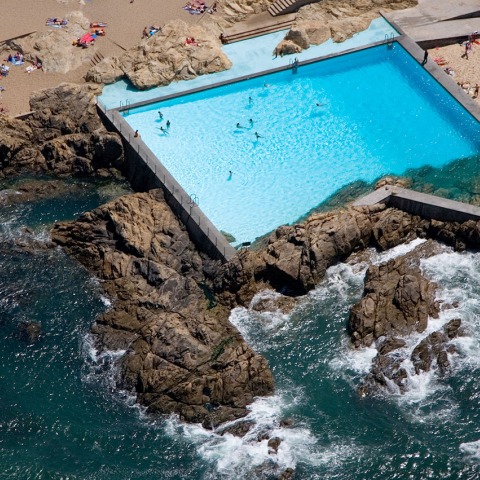Although the program assignment was a simple request, it challenged the tradition with its position at the transition point between ocean and land. And Siza decided not to fight the ocean, but to create a meeting point between the both enemies, a domesticity space between the rock and the open sea.
Siza was educated under the modern architecture's ideals, an architecture that includes organic shapes as Wright, who played an important role in adapting the pools to the territory, showing great respect for the natural physiognomy of the terrain, vernacular materials, and therefore the boundary conditions. The pools were designed not as part of the man or the water world, reaching the shear between both; a non limit.
A pool by definition is an artificial element, formed by a perfectly defined vessel. The idea of the project's limit is replaced by the threshold; the dividing line between two parts is changed by belonging to both while the differentiation against them. Siza could not establish edges facing the ocean, so the vessels of the pools are partly built with concrete walls that merge with preexisting rocks, blurring their ends.
Besides the building that houses the main facilities it is an intermediate level, nor on the boardwalk or on the beach, making the dressing rooms elongated part gone and act as a retaining wall ride, with only its copper roof to the walk's feet.
All walls - except for the cafeteria - are drawn parallel to the road, integrated into the landscape and forming part of it. Access is through a ramp that descends between blind walls, in a gradual, slow detachment from the surface of the walk, after which turn the corner and agree to the dressing room, in which both the scale and materials - tarred wood and steel handles - continue to refer to organic, and where the bare concrete prepares the bather to the rocky landscape after. The walls are anchored to the ground as if they wanted to be part of it, leaving all facilities in full view, and with a great horizontal deck flying over them and causing a fantastic shadow play.





















































